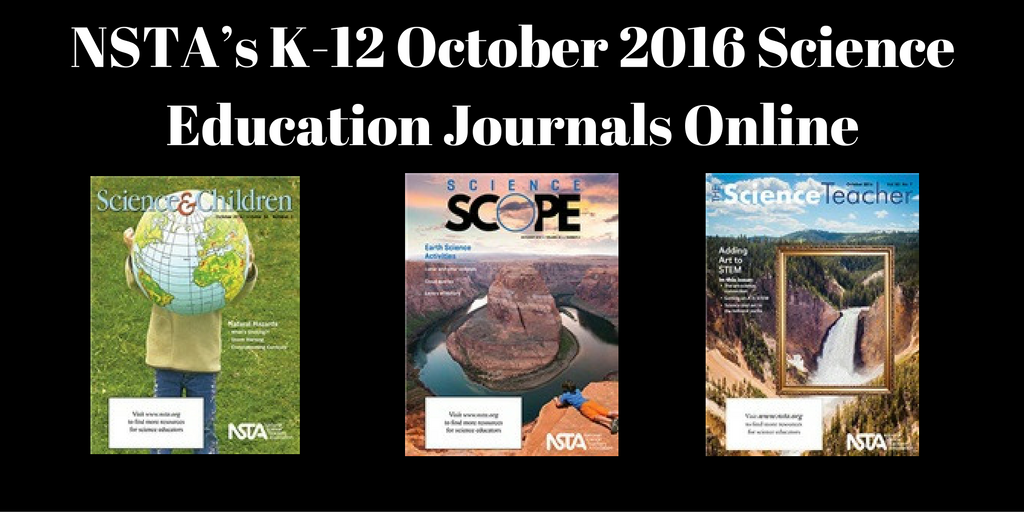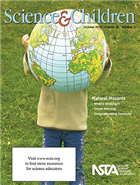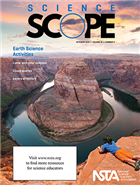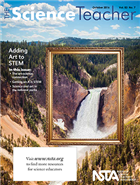NSTA's K-12 October 2016 Science Education Journals Online
By Korei Martin
Posted on 2016-10-03
Looking to teach elementary students ways to protect themselves from severe weather with the use of models? Ever thought about incorporating the Earth science processes that students saw during their summer vacations into the classroom? Want to learn how art can liven up your high school science classroom? The October K–12 journals from the National Science Teachers Association (NSTA) have the answers you need. Written by science teachers for science teachers, these peer-reviewed journals are targeted to your teaching level and are packed with lesson plans, expert advice, and ideas for using whatever time/space you have available. Browse the October issues; they are online (see below), in members’ mailboxes, and ready to inspire teachers.
While everyone has the potential to experience a natural hazard, children often have an incomplete view of these phenomena. In this issue, students will see how we can protect ourselves from severe weather and learn to mitigate the impacts of natural hazards by designing solutions through models.
Featured articles (please note, only those marked “free” are available to nonmembers without a fee):
- Complementing Curricula
- In Our Neighborhood: Who’s Been Here?
- Science and Superheroes
- Free – Storm Warning
- Free – Editor’s Note: Natural Hazards
- Full Table of Contents
Students often return to the classroom after visiting spectacular examples of Earth science processes during their summer vacations. Why not ask them to share their best selfies with Earth science phenomena featured in the background before you introduce some of the related activities in this issue of Science Scope?
Featured articles (please note, only those marked “free” are available to nonmembers without a fee):
- The Four Strands of Science Learning and the Next Generation Science Standards
- Teacher’s Toolkit: Puzzle Boxes for 3-D Learning About Natural Hazards
- Free – From the Editor’s Desk: Tying It All Together With Earth Science
- Exploring Lunar and Solar Eclipses Via a 3-D Modeling Design Task
- Free – Earth History Theories: Relative Age Dating Lab With Additions for Mining and Mineral Exploration
- Full Table of Contents
The overlap of science and art can provide rich learning experiences for students. Both science and art help develop careful habits of observation, and both engage students with crosscutting concepts like Patterns, Scale, and Proportion. Science teachers appreciate the value of artwork and creativity every time they assign a poster project, design challenge, or creative writing assignment. Perhaps best of all, including the creative arts in science instruction can help dislodge the common misconception that science is simply a dry, tedious accumulation of facts about the world instead of the imaginative, collaborative enterprise that the history of science shows it to be.
Featured articles (please note, only those marked “free” are available to nonmembers without a fee):
- Sculpting the Barnyard Gene Pool
- Science and Art in the National Parks
- Free – The Art-Science Connection
- Getting an A in STEM
- Free – Editor’s Corner: Science and the Arts
- Full Table of Contents
Get these journals in your mailbox as well as your inbox—become an NSTA member!
The mission of NSTA is to promote excellence and innovation in science teaching and learning for all.
Follow NSTA
Disclaimer: The views expressed in this blog post are those of the author(s) and do not necessarily reflect the official position of the National Science Teaching Association (NSTA).






